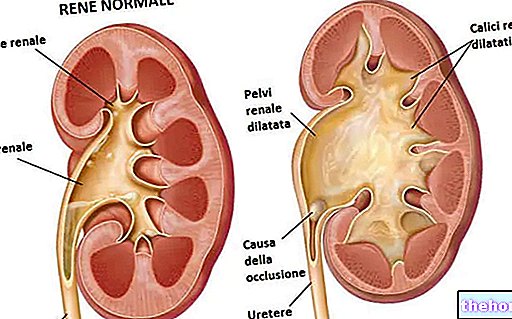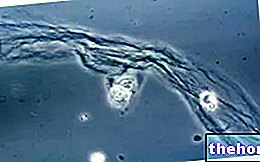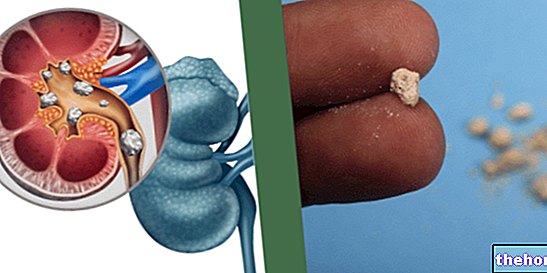Key points
Bladder polyps are soft growths - benign or malignant - that develop along any part of the mucous membrane that lines the urinary bladder.
Causes

Symptoms
When symptomatic, bladder polyps begin with purely urinary symptoms. The clinical picture of bladder polyposis is characterized by symptoms such as: altered urinary frequency, hematuria, pollakiuria and stranguria.
Diagnosis
The presence of a polyp in the bladder is ascertained by multiple diagnostic tests: cystoscopy, washing (or irrigation) of the bladder, urine and blood tests, and imaging tests.
Therapy
Even when asymptomatic, bladder polyps require surgical exeresis (removal). Malignant growths require additional chemotherapy or radiotherapy.
Bladder polyp: what is it?
Bladder polyps (incorrectly called bladder papillomas) are abnormal growths that can develop along any stretch of the bladder mucosa. Although they can sometimes be asymptomatic, bladder polyps are often responsible for bleeding and pain when urinating. Unlike nasal polyps, the chances of bladder polyps degenerating into a malignant neoplastic form are quite high; therefore, surgical removal is required as soon as possible after the onset of the first symptoms.
- However, it should be noted that not all bladder polyps are malignant.
Generality
The bladder polyps can be single or grow in groups, forming real agglomerates with a shape comparable to a bunch of grapes or a cauliflower. They can measure a few millimeters or they can extend up to a considerable size (a few centimeters). bladder polyps tend to create more bladder problems than smaller ones.
Bladder polyps can be sessile or pedunculated. In the first case, the polyp is anchored to the bladder mucosa with its entire base; otherwise, the polyps equipped with a peduncle are adhered to the same mucosa by means of a protuberance in the shape of a calyx.
All polyps - sessile or pedunculated, large or small, single or multiple - can have a smooth, irregular or polylobed surface.
Incidence
Men are more at risk of bladder polyposis than women (approximate incidence men / women 1.9: 1). Medical statistics show that the average age of onset of bladder polyps is around 57 years.
In general, it is possible to assert that bladder polyposis is a rather rare condition when compared to uterine (or endometrial) polyps, intestinal or nasal polyps.
Bladder polyposis accounts for 3% of all neoplastic forms of the bladder.
Causes and risk factors
Unfortunately, it is not possible to trace the precise triggering cause of bladder polyposis. Despite the above, an "interesting correlation was observed between smoking and the development of bladder polyps.
Smokers seem to be the category most exposed to the risk of bladder polyposis, especially those who live in industrialized and highly polluted areas.
The same goes for hairdressers, miners and workers in the textile, leather and dyes industries, constantly exposed to polycyclic aromatic hydrocarbons (in particular 2-naphthylamine and 4-aminobiphenyl).
The above suggests that the aforementioned chemicals, together with smoke and smog, can predispose the individual to the disturbance.
Similarly, subjects with a previous history or in the act of schistosomiasis also appear to be more affected by bladder polyps than healthy people. The parasite Schistosoma haematobium at the adult stage it lodges in the veins of the bladder plexus, laying its eggs near the bladder wall of the host. In the first stage of infection, it is not uncommon to find the presence of a polyp on the bladder mucosa. For this reason, the hypothesis has been formulated that schistosomiasis could be a probable etiological factor of bladder polyposis.
- Bladder polyposis triggered by schistosomiasis tends to degenerate into a malignant tumor.
Symptoms
Bladder polyps are not always symptomatic. In fact, many patients, not perceiving the presence of a polyp on the bladder mucosa, become aware of the disease only after a random diagnostic test, carried out for other reasons.
However, in most cases, bladder polyposis begins with specific symptoms, such as:
- Alteration of regular urinary frequency
- Pain on palpation on the side of the body (less common symptom)
- Painful urination (stranguria)
- Frequent urination (pollakiuria)
- Blood in the urine (hematuria)
Diagnosis
Asymptomatic polyps are discovered randomly during a routine test, required to ascertain or deny other disorders.
Upon physical examination, the patient is normal. When the presence of a polyp in the bladder is suspected, more precise investigative tests are carried out. Of all, cystoscopy is one of the most reliable tests ever. Subject to local anesthesia of the urethra. , we proceed by introducing the endoscope - a thin flexible tube equipped with a tiny video camera and a light source - into the bladder, in order to inspect the inside. The test is normally done in the urology department. After verifying the presence of a polyp in the bladder, the doctor may take a flap of tissue (biopsy); subsequently, the tissue sample will be sent to the laboratory for a "cytological investigation."
A cell sample can also be taken by means of the so-called wash (or irrigation) of the bladder. Using the aid of a catheter, the bladder cavity is irrigated with a physiological solution. Cells of the bladder mucosa can be found in the washing liquid, which will subsequently be analyzed under a microscope.
The patient may also have additional urine and blood tests to look for any markers of bladder cancer.
Imaging tests (CT and MRI) can be useful to verify the degree of invasion and the location of the polyp on the bladder mucosa.
The differential diagnosis between bladder polyps and all diseases that are characterized by similar symptoms is a must. Clinically, bladder polyposis can in fact be confused with benign prostatic hypertrophy, urinary tract infections associated with venereal disease and urinary stones.
Therapy
Even if asymptomatic, bladder polyps must be surgically removed, since, over time, they can take on malignant tumor characters.
Normally, bladder polyps undergo transurethral resection (TUR), which is the removal of the bladder polyp with the endoscopic resector. It is an instrument equipped with a metal handle capable of removing the polyp in small fragments. The removal of the lesion is favored by the passage of electric current through the resector. The instrument is inserted directly into the urethra in order to reach the cavity bladder. The surgery requires local or general anesthesia.
When the polyp is diagnosed in an advanced stage (malignant transformation), surgical removal of the bladder is conceivable.
After a malignant bladder polyp is surgically removed, the patient typically undergoes chemo / radiotherapy.
An untreated (even asymptomatic) bladder polyposis carries a high risk of malignant tumor progression. Such an attitude can worsen the prognosis and seriously endanger the patient's life.
Bladder polyps can also reform following surgery (marked tendency to post-operative recurrence). In such circumstances, polyps can acquire an increasingly invasive character, especially in the case of a previous malignant bladder polyp.
















.jpg)











